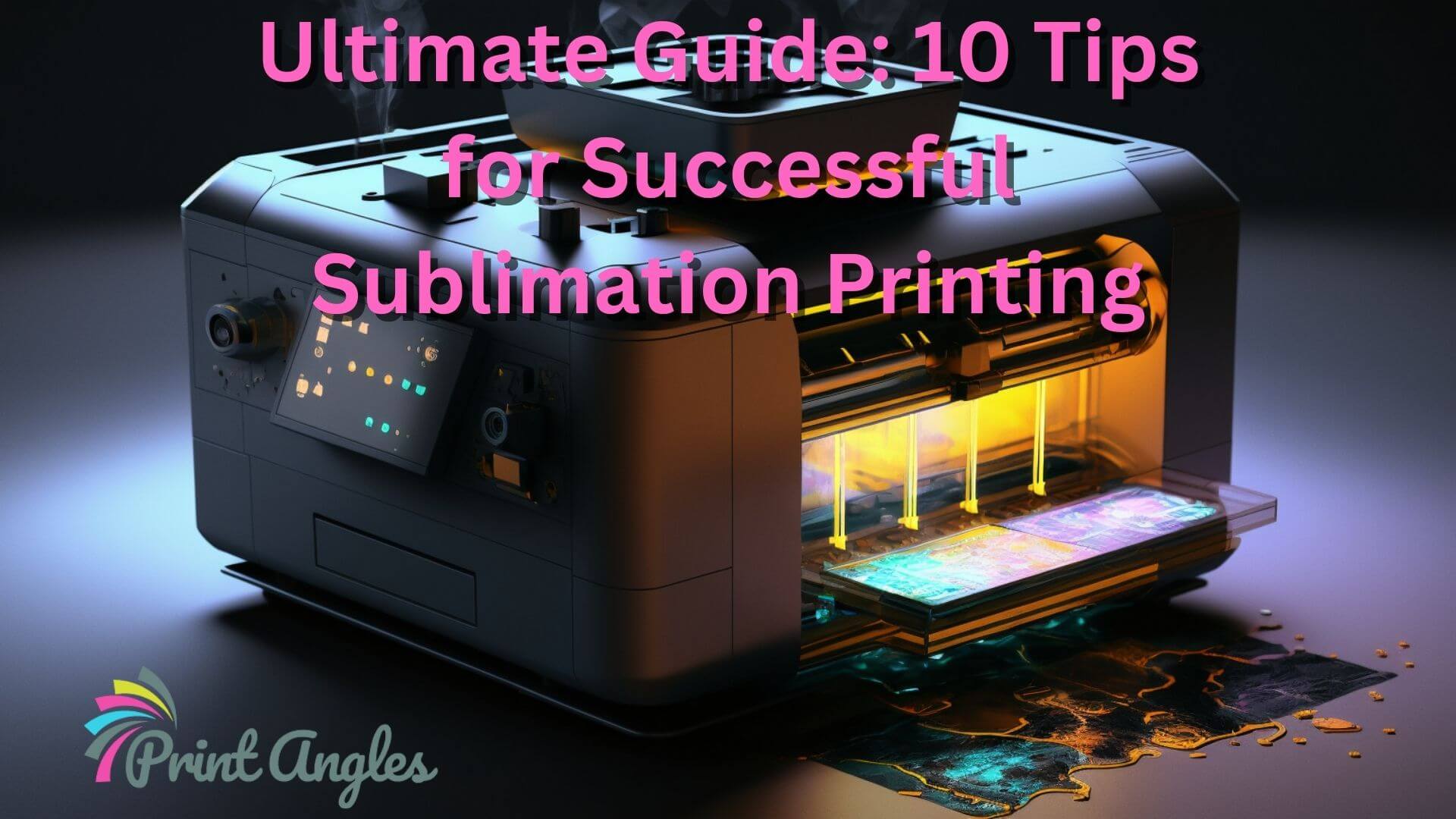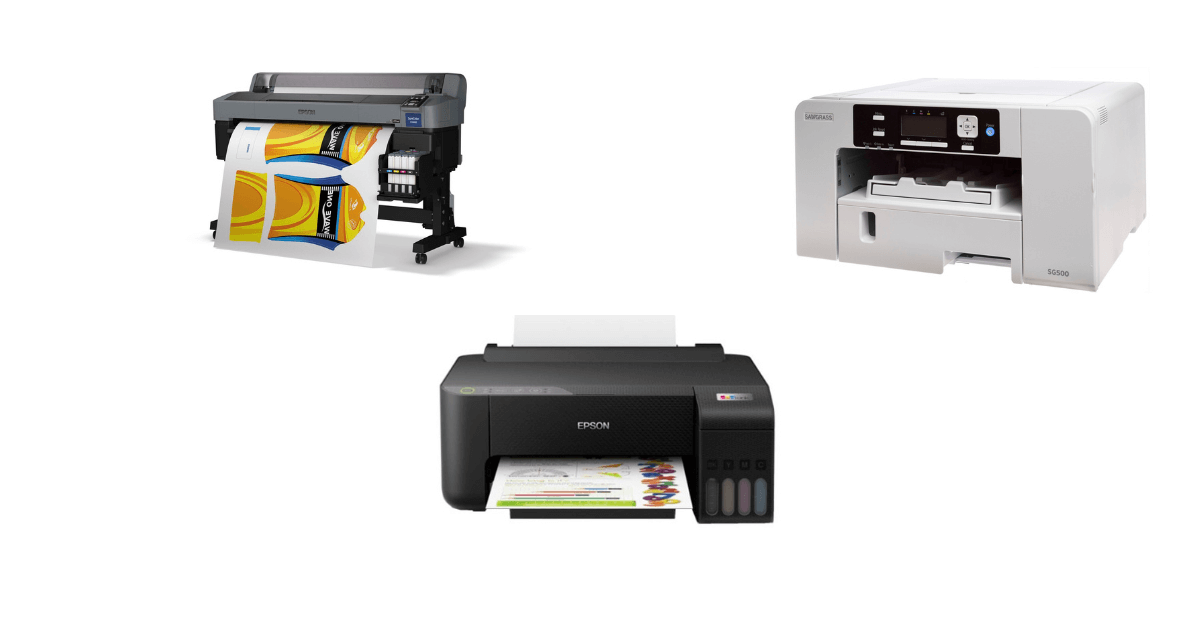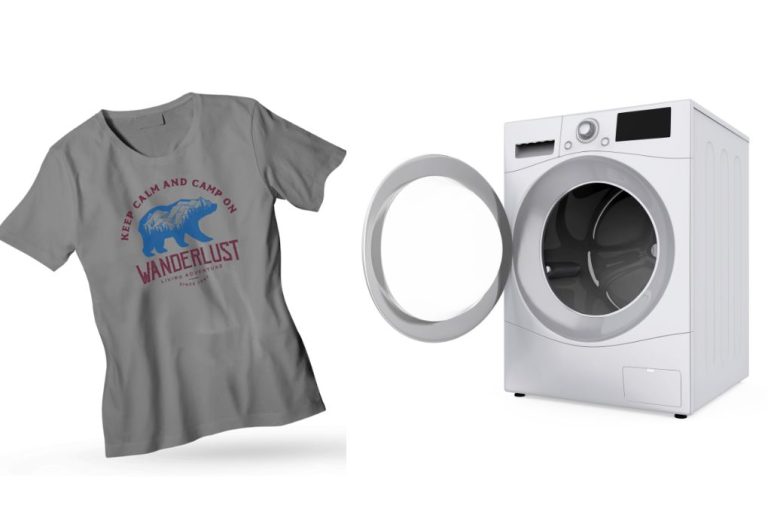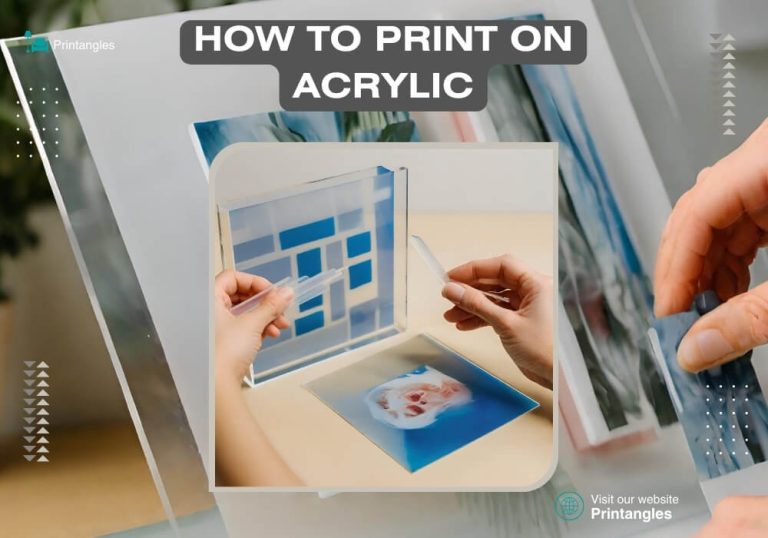Ultimate Guide: 10 Tips for Successful Sublimation Printing

Welcome to the fascinating world of sublimation printing, where vibrant colors come to life and designs take shape with exceptional clarity and detail. Sublimation printing is a versatile and exciting technique that allows you to transfer high-quality, full-color images onto a wide range of products, from garments and accessories to home decor and promotional items.
To unlock the true potential of sublimation printing and create stunning, professional-grade prints, it’s essential to have a solid understanding of the process and follow proven strategies. I’ll provide you with ten tips for successful sublimation printing, ensuring your success and empowering your creativity to soar. So, let’s dive into this transformative journey and discover the secrets to achieving breathtaking results.
Table of Contents
- Things To Consider: Tips for successful sublimation printing
- 1. Choose the Right Sublimation Printer
- 2. Invest in High-Quality Sublimation Paper
- 3. Use the Right Ink
- 4. Optimize Your Designs
- 5. Master the Heat Press
- 6. Understand Different Substrates
- 7. Test Your Settings and Materials
- 8. Maintain Your Equipment
- 9. Troubleshoot Common Issues
- 10. Stay Up-to-Date with Industry Trends and Techniques
- Frequently Asked Questions (FAQs)
- Conclusion – Tips for successful sublimation printing
Things To Consider: Tips for successful sublimation printing
1. Choose the Right Sublimation Printer

Selecting the ideal sublimation printer is crucial to your success. Here’s a comprehensive guide on choosing the right sublimation printer for your business.
Make sure you consider factors like size, printing speed, and ink compatibility when making your decision.
Also, take into account the type of products you plan to create, as some printers are better suited for specific substrates.
Research various models and brands, and read reviews from other users to ensure you invest in a reliable and high-performing printer that meets your needs.
Related: Best Mug Sublimating Printer, Best Printer for T Shirt Sublimation, sublimation ideas
2. Invest in High-Quality Sublimation Paper
Using the right sublimation paper is essential for achieving vibrant, sharp images. Learn how to use sublimation paper and find the best sublimation paper for your needs.
High-quality sublimation paper allows for better ink absorption and release during the heat transfer process, resulting in more accurate and vivid colors.
Additionally, consider the thickness and coating of the paper, as these factors can affect the final result.
It’s essential to experiment with different types of sublimation paper to find the one that works best for your specific printer and project.

3. Use the Right Ink
Sublimation printing requires specialized sublimation ink to ensure proper color transfer and durability.
Explore the different types of sublimation inks and choose the right one for your printer and project.
High-quality sublimation inks will provide more accurate color reproduction and longer-lasting prints.
When selecting your ink, make sure it is compatible with your printer model and the materials you plan to use.
Additionally, storing your ink properly, away from direct sunlight and extreme temperatures, will help maintain its quality and prolong its shelf life.
Recommended: Are sublimation mugs microwave safe?
4. Optimize Your Designs
Successful sublimation printing starts with a great design. Discover the best sublimation design software and learn how to create a sublimation design that will deliver stunning results.
When designing, consider factors such as image resolution, color profiles, and file formats to ensure the best print quality.
Utilize vector images for scalability, and calibrate your monitor and printer to achieve accurate color matching.
Also, think about the substrate you’re printing on, as different materials may require adjustments in your design or color settings to achieve optimal results.
5. Master the Heat Press
The heat press is a vital component of the sublimation process.
Learn how to use a heat press machine and find the best sublimation printer for heat transfer to ensure consistent results.
Familiarize yourself with the various types of heat presses, such as clamshell, swing-away, and draw-style models, and choose the one that best fits your needs and workspace.
Additionally, learn how to properly adjust temperature, pressure, and time settings for different materials and products.
Regular maintenance and calibration of your heat press are crucial for achieving consistent, high-quality prints.
6. Understand Different Substrates
Sublimation printing can be done on various substrates, such as fabric, ceramics, and wood.
Discover the different types of sublimation and learn how to print on specific materials like canvas, wood, and ceramic plates.
Each substrate has unique properties that can impact the final result, so it’s essential to understand how different materials react to the sublimation process.
Additionally, some substrates may require specific coatings or treatments to ensure proper ink adhesion and color vibrancy.
By familiarizing yourself with various substrates, you can expand your product offerings and cater to a wider range of customers.
7. Test Your Settings and Materials
Before starting a large-scale project, test your settings and materials to ensure you achieve the desired results. Experiment with temperature, pressure, sublimation transfers ,and time settings on your heat press to find the perfect balance.
Testing is also an opportunity to verify that your chosen ink, paper, and substrate combination works well together.
By conducting test prints, you can identify potential issues and make necessary adjustments before committing to a full-scale production.
This can save you time, money, and resources while ensuring that your final products meet the highest quality standards.

8. Maintain Your Equipment
Proper maintenance of your equipment is crucial for consistent results. Regularly clean your sublimation printers, replace worn parts, and ensure your heat press is in good working order.
Keep your printer’s printhead and ink cartridges clean to prevent clogging and other issues that can affect print quality.
Additionally, follow manufacturer guidelines for maintaining your heat press, including cleaning the platen and checking for wear or damage.
By keeping your equipment in top condition, you can avoid costly repairs and downtime, ensuring that your sublimation printing business runs smoothly and efficiently.
9. Troubleshoot Common Issues
Master the art of troubleshooting common sublimation printing issues like color fading, image brightness, and removing sublimation ink from shirts. Being able to identify and resolve problems quickly will help you maintain high-quality prints.
Familiarize yourself with common challenges and their solutions, such as adjusting your heat press settings, ensuring proper ink and paper compatibility, or optimizing your designs.
By developing a strong understanding of the sublimation process and potential issues, you can minimize downtime and ensure customer satisfaction.
10. Stay Up-to-Date with Industry Trends and Techniques
The sublimation printing industry is constantly evolving, with new techniques, materials, and equipment being introduced. Stay informed by following industry blogs, attending trade shows, and networking with other professionals. Check out our blog for the latest insights and trends.
By staying up-to-date with industry developments, you can continuously improve your skills, enhance your product offerings, and stay ahead of the competition. This proactive approach will not only help you grow your business but also enable you to provide your customers with the latest and most innovative sublimation products on the market.
Recommended: Sublimation Printing Comparison with Screen Printing, Use of sublimation ink on heat transfer paper
Frequently Asked Questions (FAQs)
Can you use a regular printer for sublimation?
A: No, you cannot use a regular printer for sublimation printing. For your Sublimation success, you require specialized printers and dye sublimation ink.
Learn more about the differences between regular and sublimation printers here.
What is the difference between sublimation and heat transfer?
Sublimation and heat transfer are two distinct printing methods. While both use heat to transfer images, sublimation involves turning ink into gas and embedding it into the material, whereas heat transfer uses a printed transfer paper applied to the surface.
Find out more about the differences between sublimation and heat transfer here. Making sublimated coating
Can I sublimate on cotton?
Sublimation works best on polyester or polyester-coated materials. However, it is possible to sublimate on cotton using special coating solutions or hybrid transfer papers.
Learn more about sublimation on cotton here.
Are sublimation tumblers dishwasher safe?
A: Yes, sublimation tumblers are generally dishwasher safe.
The sublimation process embeds the ink into the material, making it resistant to washing and wear.
Learn more about sublimation tumblers and their durability here.
Conclusion – Tips for successful sublimation printing
Mastering the art of sublimation printing requires time, patience, and practice.
By following these 10 Tips for Successful Sublimation Printing, you’ll be well on your way to creating stunning, high-quality prints on various substrates.
Remember to invest in the right equipment, optimize your designs, and stay informed about industry trends and techniques to achieve the best results.
With dedication and attention to detail, and above mentioned tips and tricks, you’ll soon become an expert in the exciting world of sublimation printing.
Recommended: Best Sublimation Printers, Best Sublimation Printers for Newbies, Can i use regular printer for transfer paper? types of sublimated shirts

I’m Derrick Flora and I am the owner of Printangles.com. I am the father of 2 angles and 1 boy and I am 37 years old. I had done Bachelor in Fashion and Textile Studies from FIT State University of New York. It’s been 7 years since when started the sublimation business. I sublimated mugs, t-shirts, canvas, and many more. And we have analyzed some things that beginners don’t apply the actual strategies to complete the project. And those strategies are making your sublimation better onto the material. What do beginners do, they just buy the sublimation printer and the heat press without knowing about them.






